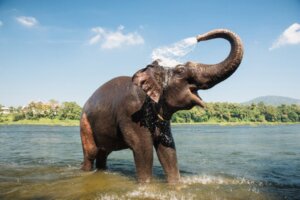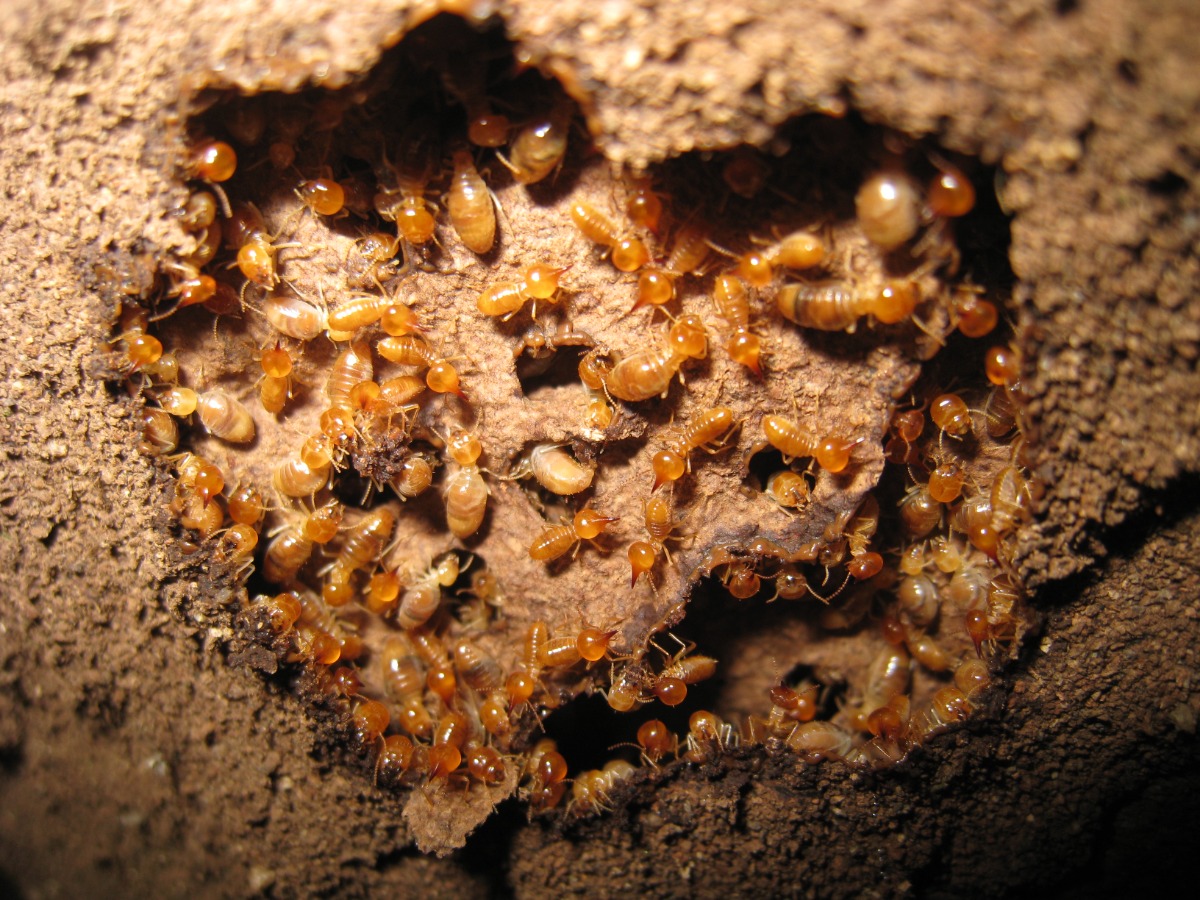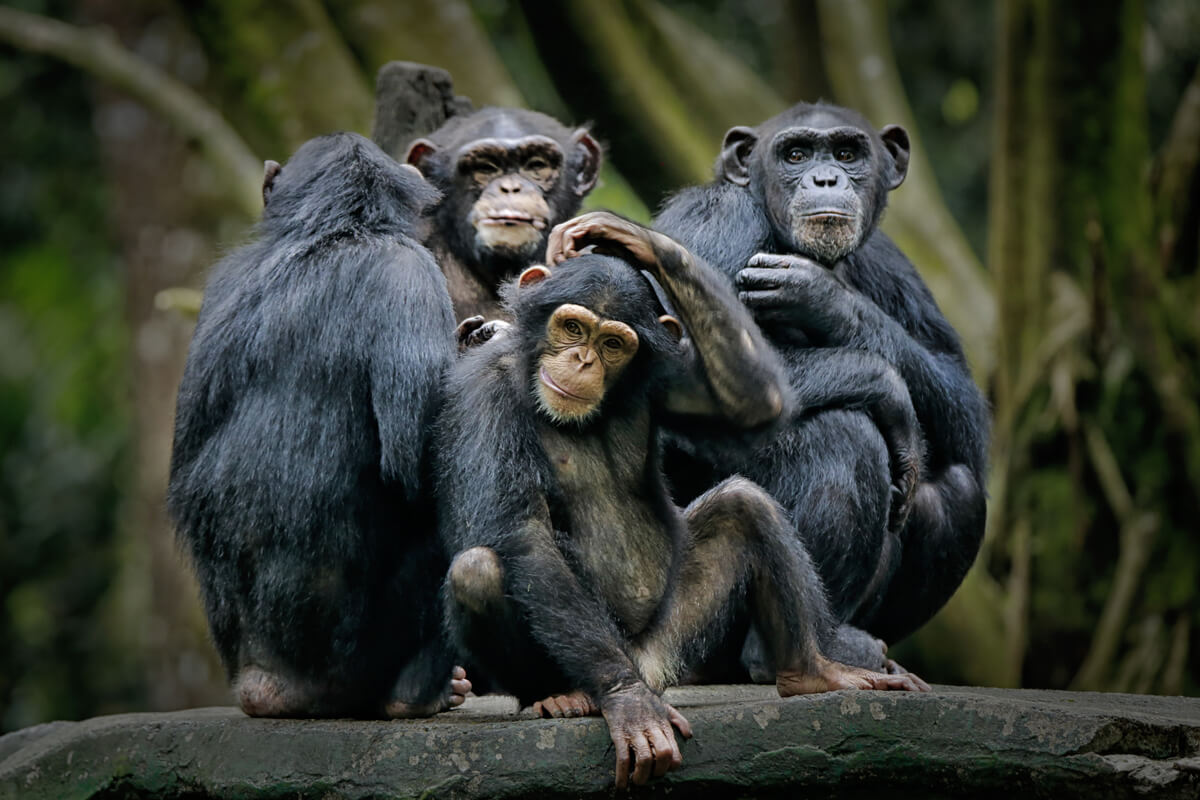What is Gregariousness in Animals?

According to the dictionary, gregariousness is the tendency to live in groups and this can occur in both humans and animals. Gregarious individuals are those who group together and form societies to support each other.
As described by Aristotle, gregariousness means to congregate, something totally common in many different creatures of land, air, and sea.
Frequent characteristics of gregarious animals
In human or animal societies there are rules, ways of working, and members who lead. Did you know that several species of animals also have a sense of leadership, but to exercise this quality they need to be gregarious, as individuals with more information attract the rest of the group.
For this reason, experts think that some of these gregarious animals can be considered as political, as they have a shared way of life in which everyone contributes, such as bees, wasps, ants, cranes, among other species.
Gregariousness in animals
When studying animal behavior, we find some quite magnificent, admirable, and surprising behavior. They often very much resemble humans. Here are several examples of gregarious communities in the animal kingdom, investigated by Faustino Gudin (article in Spanish). Their social organizations are quite striking.
Termites
These little insects are full of surprises, as their chances of survival are based directly on their form of social organization, which seems perfect, due to their surveillance, defense, and construction systems. They’re even able to build amazing cities that are difficult for other insects to access.
In comparison with bees, the termite queen doesn’t rule alone, although she does have the exclusive and exhausting function of having to lay an egg every twenty seconds. The workers are blind and wingless, and the soldiers secrete a poisonous resin as a means of defense.

Elephants
When it comes to elephants, they manifest gregariousness in animals too. Here the females are also leaders, creating strong and lasting relationships with at least one hundred elephants; with whom they communicate by infrasound that travels hundreds of kilometers.
Did you know that elephants are one of the few animals that consider death as transcendental? They respect their carcasses, memorialize them, and don’t allow scavengers to approach them in their presence.
Apart from humans, elephants have created the most elaborate social network in the animal kingdom. They remember their distant friends, transit routes, and the places where they can find mud and water holes.
They have a privileged memory and intelligence. Its members have the ability to debate constantly to make decisions about water, food, and safety, and when elephants disagree, they emit high-pitched voices.
Sperm whales
This species also has strong and enduring bonds among each other. They protect younger individuals and care for the sick and injured.
Females form groups with their calves, where some gather food, some nurse, and others protect the weaker ones. Dividing the functions allows some females to go to the depths to look for food while others can be on the surface taking care of the young that haven’t yet ventured to the depths.
They also communicate with each other over long distances by means of a message system with sound patterns, similar to Morse code. Each clan has a dialect with different sound patterns. The adults teach the young to identify each other.
Chimpanzees
These animals have self-awareness, high potential for social relationships, and a culture that they transmit from generation to generation.
They can learn sign language, use tools, and cooperate with each other, but they can also manipulate and lie, which requires complex cognitive development. Did you know that chimpanzees and humans are the only species that can tell a lie?

New ideas of gregariousness
These and many more species of animals are gregarious, such as rats, wolves, and dolphins.
It’s curious how the examples expanded above break with the idea of the alpha male that dominates a group. As we can see, on many occasions communities are formed around females, and males sometimes only have a reproductive function.
According to the dictionary, gregariousness is the tendency to live in groups and this can occur in both humans and animals. Gregarious individuals are those who group together and form societies to support each other.
As described by Aristotle, gregariousness means to congregate, something totally common in many different creatures of land, air, and sea.
Frequent characteristics of gregarious animals
In human or animal societies there are rules, ways of working, and members who lead. Did you know that several species of animals also have a sense of leadership, but to exercise this quality they need to be gregarious, as individuals with more information attract the rest of the group.
For this reason, experts think that some of these gregarious animals can be considered as political, as they have a shared way of life in which everyone contributes, such as bees, wasps, ants, cranes, among other species.
Gregariousness in animals
When studying animal behavior, we find some quite magnificent, admirable, and surprising behavior. They often very much resemble humans. Here are several examples of gregarious communities in the animal kingdom, investigated by Faustino Gudin (article in Spanish). Their social organizations are quite striking.
Termites
These little insects are full of surprises, as their chances of survival are based directly on their form of social organization, which seems perfect, due to their surveillance, defense, and construction systems. They’re even able to build amazing cities that are difficult for other insects to access.
In comparison with bees, the termite queen doesn’t rule alone, although she does have the exclusive and exhausting function of having to lay an egg every twenty seconds. The workers are blind and wingless, and the soldiers secrete a poisonous resin as a means of defense.

Elephants
When it comes to elephants, they manifest gregariousness in animals too. Here the females are also leaders, creating strong and lasting relationships with at least one hundred elephants; with whom they communicate by infrasound that travels hundreds of kilometers.
Did you know that elephants are one of the few animals that consider death as transcendental? They respect their carcasses, memorialize them, and don’t allow scavengers to approach them in their presence.
Apart from humans, elephants have created the most elaborate social network in the animal kingdom. They remember their distant friends, transit routes, and the places where they can find mud and water holes.
They have a privileged memory and intelligence. Its members have the ability to debate constantly to make decisions about water, food, and safety, and when elephants disagree, they emit high-pitched voices.
Sperm whales
This species also has strong and enduring bonds among each other. They protect younger individuals and care for the sick and injured.
Females form groups with their calves, where some gather food, some nurse, and others protect the weaker ones. Dividing the functions allows some females to go to the depths to look for food while others can be on the surface taking care of the young that haven’t yet ventured to the depths.
They also communicate with each other over long distances by means of a message system with sound patterns, similar to Morse code. Each clan has a dialect with different sound patterns. The adults teach the young to identify each other.
Chimpanzees
These animals have self-awareness, high potential for social relationships, and a culture that they transmit from generation to generation.
They can learn sign language, use tools, and cooperate with each other, but they can also manipulate and lie, which requires complex cognitive development. Did you know that chimpanzees and humans are the only species that can tell a lie?

New ideas of gregariousness
These and many more species of animals are gregarious, such as rats, wolves, and dolphins.
It’s curious how the examples expanded above break with the idea of the alpha male that dominates a group. As we can see, on many occasions communities are formed around females, and males sometimes only have a reproductive function.
All cited sources were thoroughly reviewed by our team to ensure their quality, reliability, currency, and validity. The bibliography of this article was considered reliable and of academic or scientific accuracy.
- Bull M. Vectores de la biopolítica. New Left Review.[Internet] 2020 [consultado]. Disponible en: https://newleftreview.es/issues/45/articles/malcolm-bull-vectores-de-la-biopolitica.pdf
- Diccionario de la Real Academia Española. Definición de gregarismo [Internet] 2020 [consultado]
- Disponible en: https://dle.rae.es/gregarismo
- Gudin Rodríguez-Magariños F. “UBI SOCIETAS, IBI IUS”: SOBRE LAS NORMAS QUE ORGANIZAN A LOS ANIMALES GREGARIOS. IES [Internet]. 9 de mayo de 2016 [citado 16 de marzo de 2021];2(1):1-34. Disponible en: https://revistascientificas.us.es/index.php/ies/article/view/13209
This text is provided for informational purposes only and does not replace consultation with a professional. If in doubt, consult your specialist.








